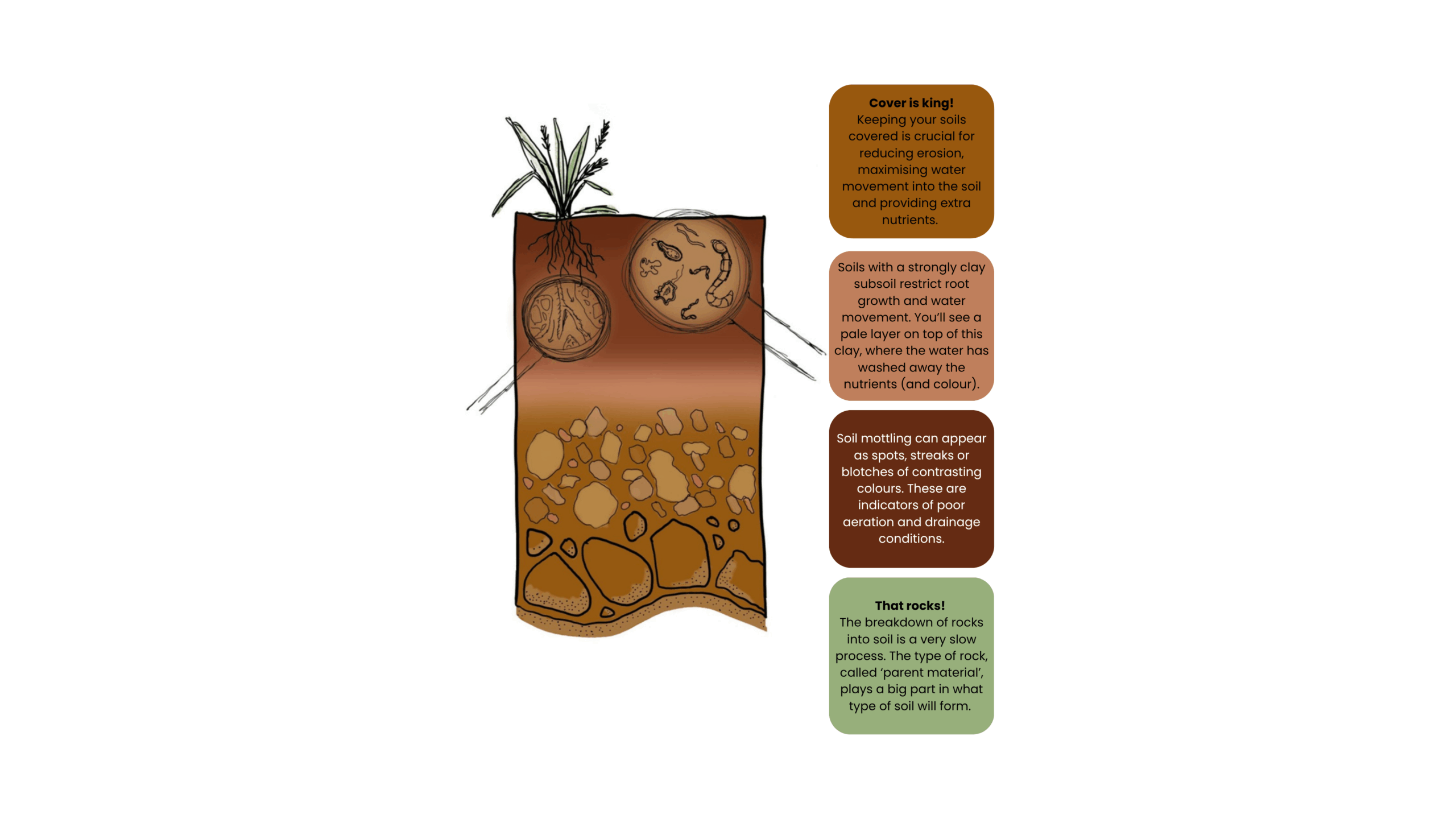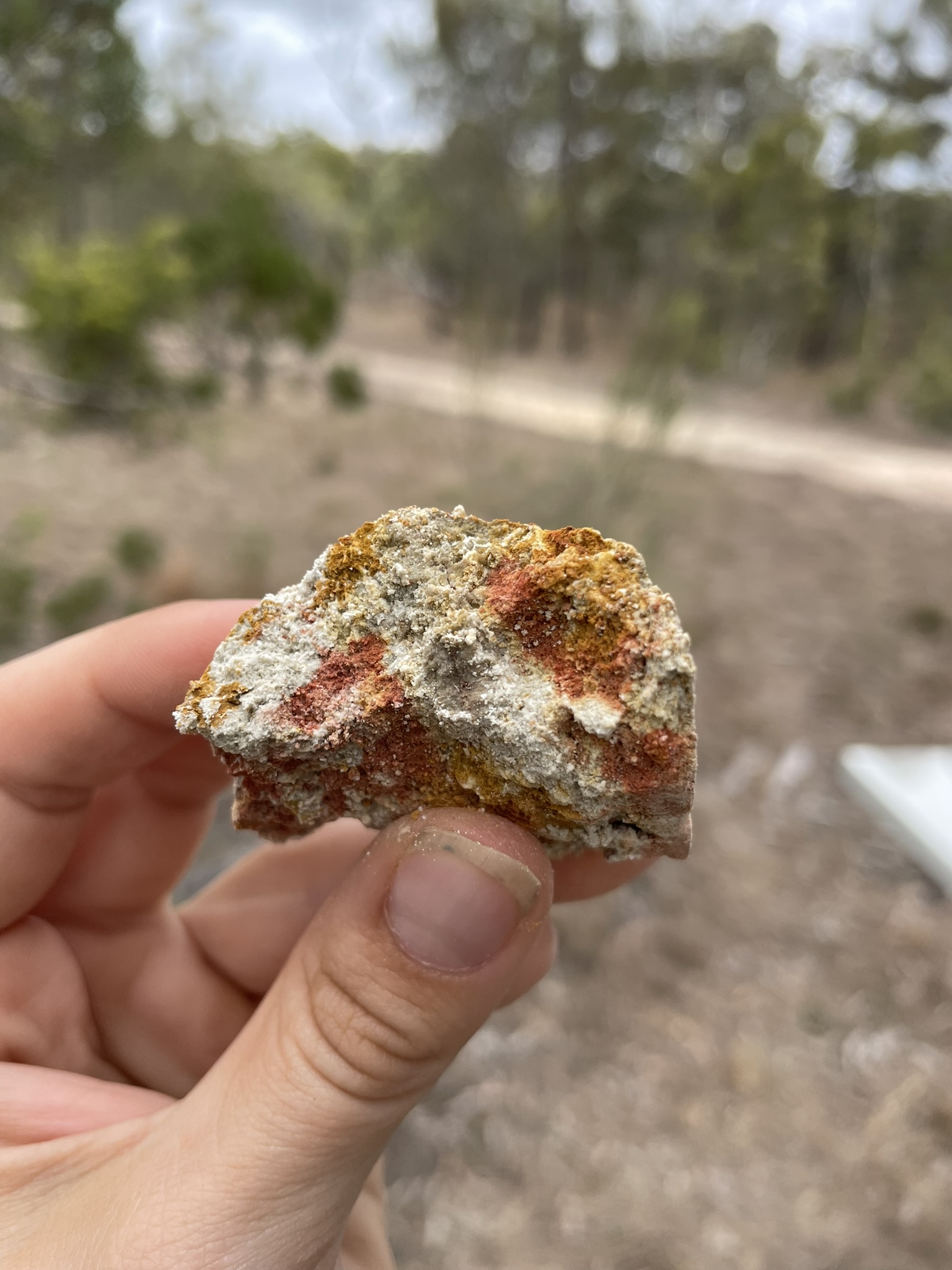Story, photo and graphic by Mali Eagle
Without soil, we would all be naked, hungry and homeless
An ecosystem more diverse than our rainforests, storing more carbon than the atmosphere and vegetation combined, and providing the basis for every single ecosystem function – soils do more than hold up our houses, bog our cars and get tracked through the house.
No seriously. It provides the fibre needed to make clothes, the feed for a future steak and the materials we need to build a home.
Breaking it down: what is a fertile soil?
Soil types aren’t ‘good’ or ‘bad’, they’re just different on a physical, chemical and biological level and need to be managed as such. Instead, it’s important to ask: what is fertile soil? One that provides the water, air and nutrients for plants and biology to grow. This is influenced by a number of factors: soil structure, pH, microbiology – the list goes on!
When a leaf falls onto the soil surface, it is broken down by microbes into organic matter. Organic matter is like liquid gold for a soil; it acts as a glue, holding the soil particles together to improve water infiltration, supplying the plants with essential nutrients and boosting the soil microbial community.
The amount of organic matter in soil determines its fertility, and a big organic pool means lots of good nutrients for plant growth.
Soils also act as a sponge, storing water in air pockets. As water moves into and through it, the soil acts as a filter, cleaning out pollutants and nutrients. The soil holds onto these substances rather than releasing it into the groundwater. A healthy soil can transform contaminants into something different, thanks to the hard work of soil microbes. They’ve even found a bacteria that can turn an oil spill into water and carbon dioxide!
Unfortunately, there’s no quick fix to make a soil healthy, but knowledge is power; whether you’re mustering a herd, cropping mangoes or choosing a new vegie patch, having a better understanding of what soil occurs on your land can help you make informed management decisions.
As a producer, soil is your most precious asset; quite literally the foundation upon which your life sits. It is a key factor, alongside climate, that determines what you can grow, how well you can grow it and how much help you need to add.
Get your hands dirty: a call to action
1) What can you see?
You should be able to see a topsoil – a darker horizon with lots of roots, decaying leaf litter and earthworms (if you’re lucky!). Beneath that, the soil can be a range of colours and textures. Try to spot different layers as you get deeper!
2) What can you feel?
Explore the soil’s top layer (between 2 and 10cm), then venture a little further into the profile if you can. Gather a handful of soil from one layer, add in some water to bring it together and squeeze it around. Does it feel gritty and sandy? Is it a little spongy? Is it kind of soapy? Does it seem slick, like clay? This can indicate your soil’s texture, which determines three key aspects: 1) its ability to store water and nutrients, 2) its risk of erosion and land degradation, and 3) its potential salinity.
3) Grab a kit!
You can get pH testing kits from most local hardware stores (check the gardening section!). Try comparing the pH in the top and subsoil across your land. This is a cost-effective and easy way to measure the variability of your land, while it could also highlight any major constraints.
4) Understand – it all starts with soil!
Science and study kits aside, if there’s one key takeaway, let it be this: soil is fundamental to life on earth. Learning more about yours will undoubtedly support you in making informed land management decisions that benefit your wallet, your farm and your world.
Graphic: “A slice of soil”


